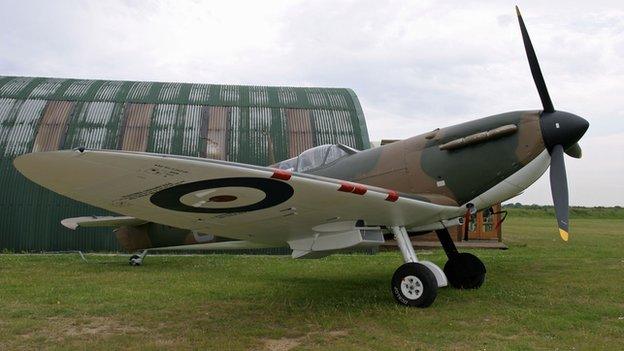Spitfire flight over Southampton marks 80th anniversary
- Published
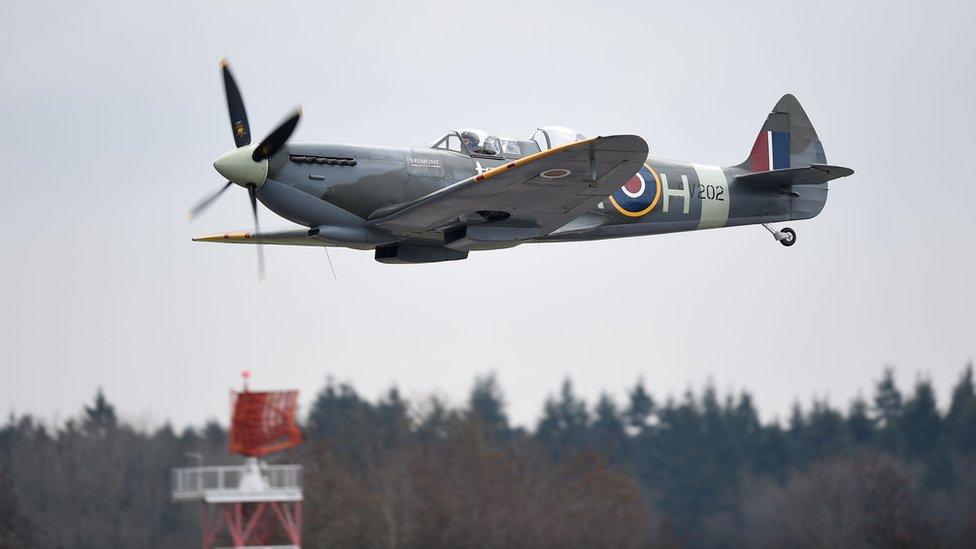
The flypast marked 80 years since the first prototype Spitfire took off
A flypast to mark the 80th anniversary of the Spitfire's first flight has taken place over the Hampshire coast.
The first prototype, K5054, designed by RJ Mitchell, took off from Eastleigh Aerodrome on 5 March 1936.
A Spitfire flew over Southampton Water and the site of the Supermarine factory in Woolston, where thousands of the World War Two fighters were made.
Southampton Airport managing director Dave Lees said the plane "continues to enthral people today".
The plane took off from the airport shortly before 12:00 GMT having been delayed by cloudy weather conditions.
It retraced the route taken by the prototype 80 years earlier, heading along the Hampshire coast to Portsmouth before returning to Southampton Airport.
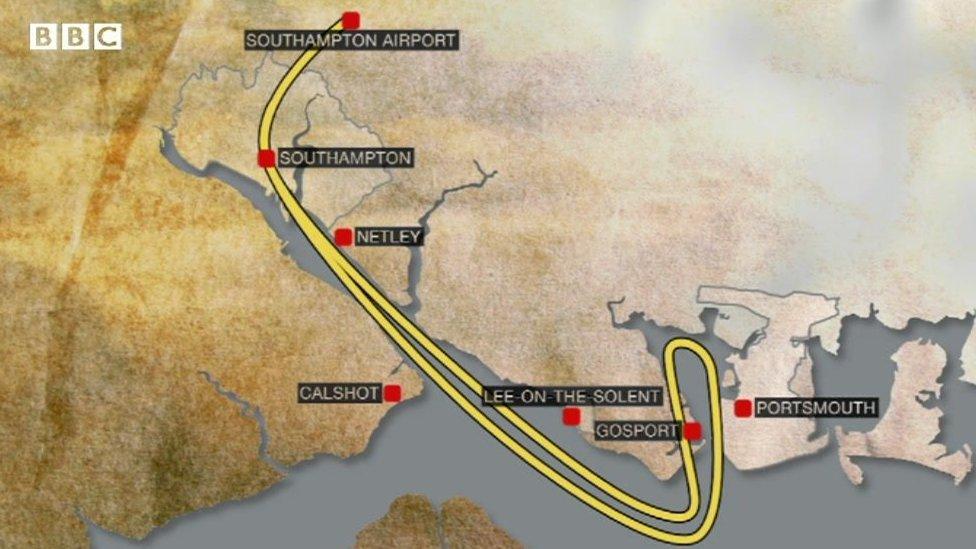
The Spitfire retraced the route of the 1936 prototype
The plane overflew Mitchell's grave at South Stoneham Cemetery, the site of the Woolston factory and onwards to Portsmouth Harbour.
During World War Two, with the Spitfire proving critical, the Supermarine factory was targeted by the Luftwaffe to destroy production facilities.
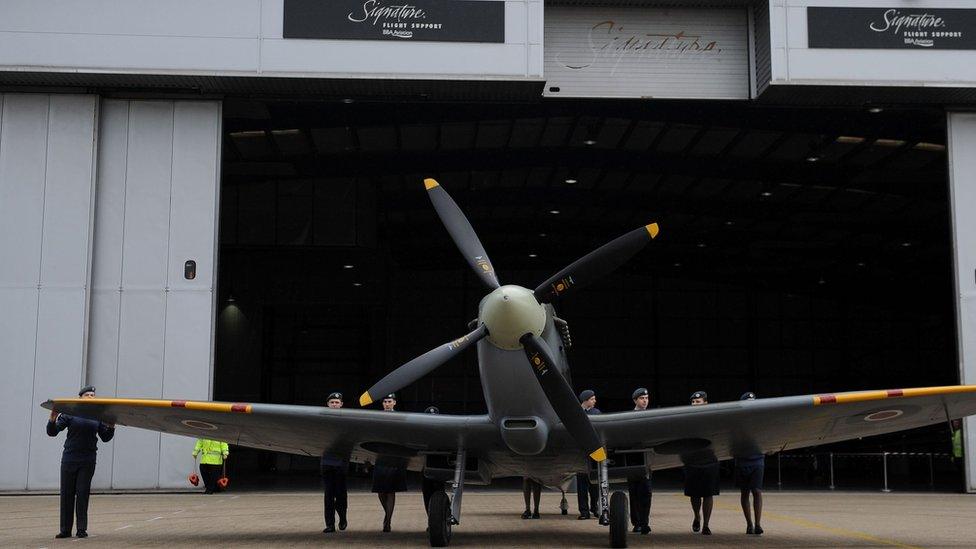
Air cadets performed a guard of honour for the Spitfire
Members of the local Air Cadet Squadron performed a guard of honour for the Spitfire as it was wheeled out of the hangar at Southampton Airport, on the same site as the old Eastleigh Aerodrome.
Among the guests was one of the engineers during the aircraft's heyday, Gordon Monger, from Cirencester, Gloucestershire, and his wife, Judy, the daughter of one of the designers Ernest Mansbridge.
Mr Monger, 90, said: "It doesn't seem real to me after all these years. It still looks as marvellous to me as it did all those years ago."
A second Spitfire flypast over Mayflower Park in Southampton, organised by Solent Sky Museum, took place later on Saturday afternoon.

The Supermarine Spitfire

Designed by RJ Mitchell, the prototype Spitfire Spitfire K5054 was developed from the Schneider seaplanes and powered by a Rolls Royce Merlin engine. It took off from Eastleigh Aerodrome, now Southampton Airport, on 6 March 1936.
After Mitchell died in 1937, his successor Joe Smith developed the fighter to make it faster and more powerful. Mk1 Spitfires entered RAF service (with No 19 Squadron) in August 1938.
With its combination of speed, manoeuvrability and firepower, it proved to have the decisive advantage fighting the Luftwaffe in the Battle of Britain.
It also played a key role in the air battle for Malta and providing air cover for the D-Day landings in 1944.

- Published5 March 2016
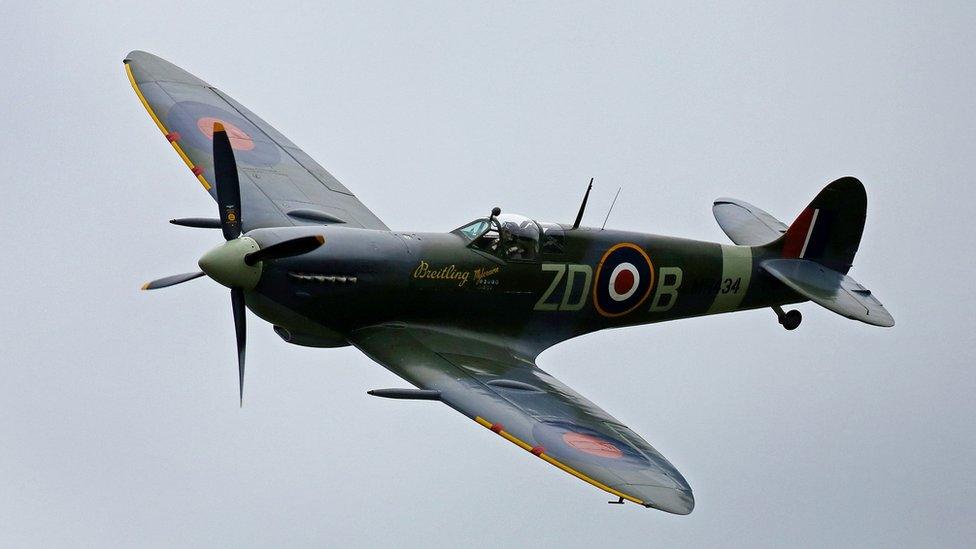
- Published5 March 2016
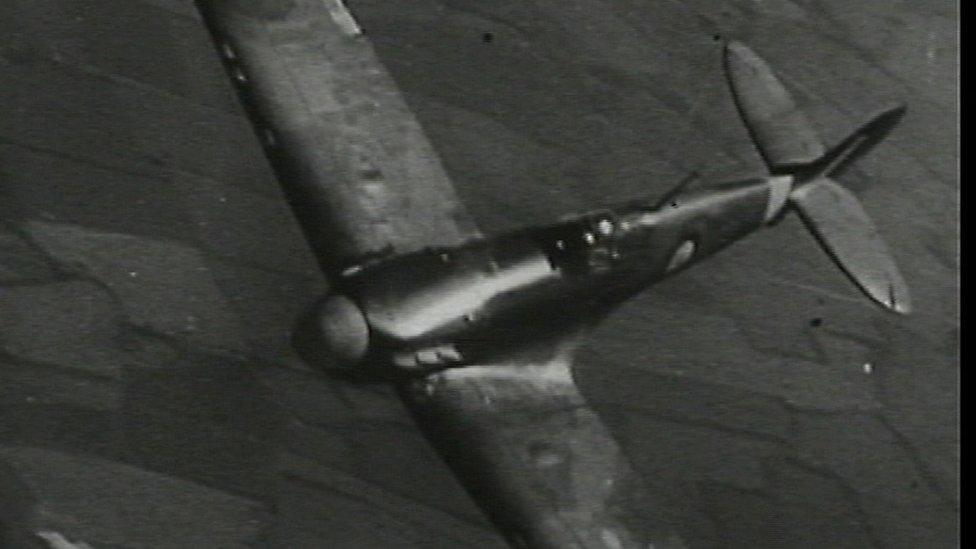
- Published4 March 2016

- Published10 July 2015
